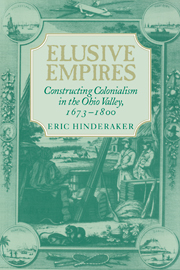Epilogue: State Power and Popular Authority in the New American Nation
Published online by Cambridge University Press: 16 February 2010
Summary
A new kind of empire, linked to a new kind of state, originated in the American Revolution, and the Ohio Valley was its first testing ground. Earlier British and French attempts to master the region were defeated by its size, the complexity of its human population, and the troublesome independence of colonists and Indians alike. To extend empire into the continental interior seemed to require a more potent, centralized, authoritarian state, one that could effectively manage the complexities of the region and oversee intercultural relations, monitor economic affairs, and regulate social development. But an administrative structure sufficiently strong and flexible to meet these challenges never did emerge, in either the French sphere or the British. Though the region was deeply affected by European imperialism – its social and economic systems, its patterns of alliance and warfare, its communities and its culture all bore the deep impress of intercultural relations – and though individual colonists profited in their activities in the Ohio Valley, administrators and architects of empire wanted more. They wanted not simply to oversee those processes, but to control them. That goal always eluded European empire-builders in the Ohio Valley.
The United States succeeded where France and Britain failed. Ironically, its success was due in part to the weakness of the national state.
- Type
- Chapter
- Information
- Elusive EmpiresConstructing Colonialism in the Ohio Valley, 1673–1800, pp. 268 - 270Publisher: Cambridge University PressPrint publication year: 1997



